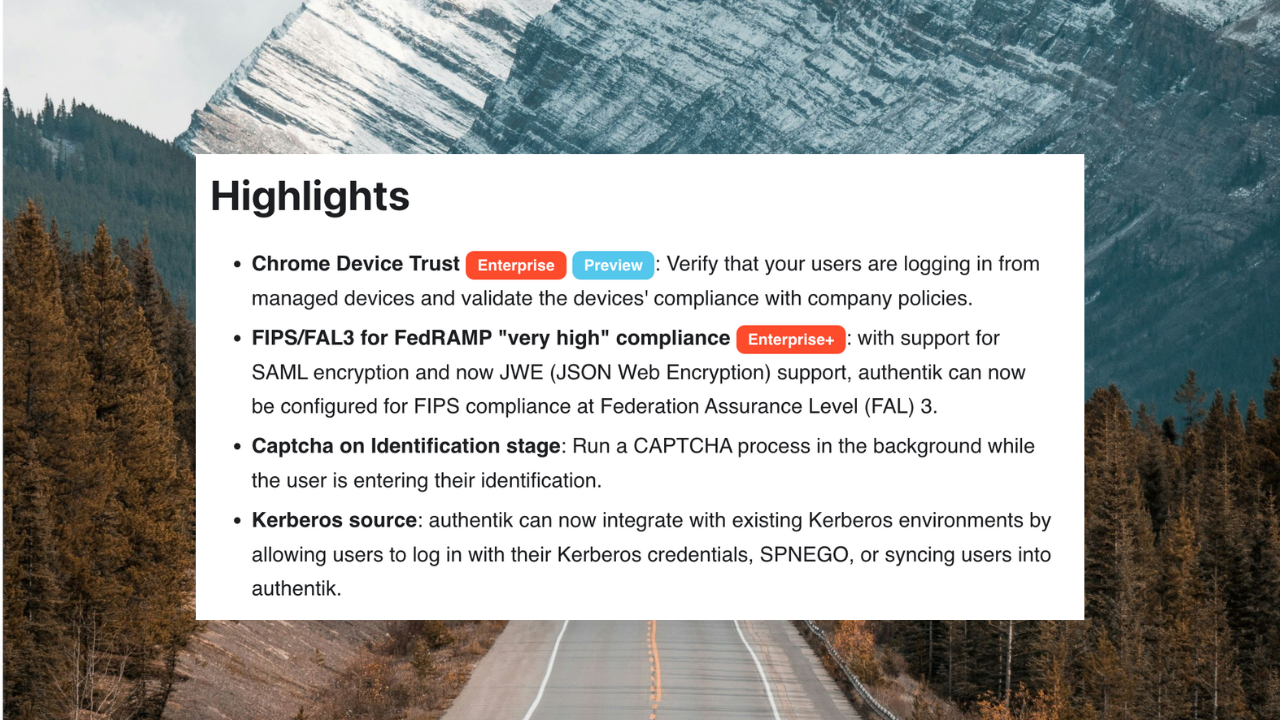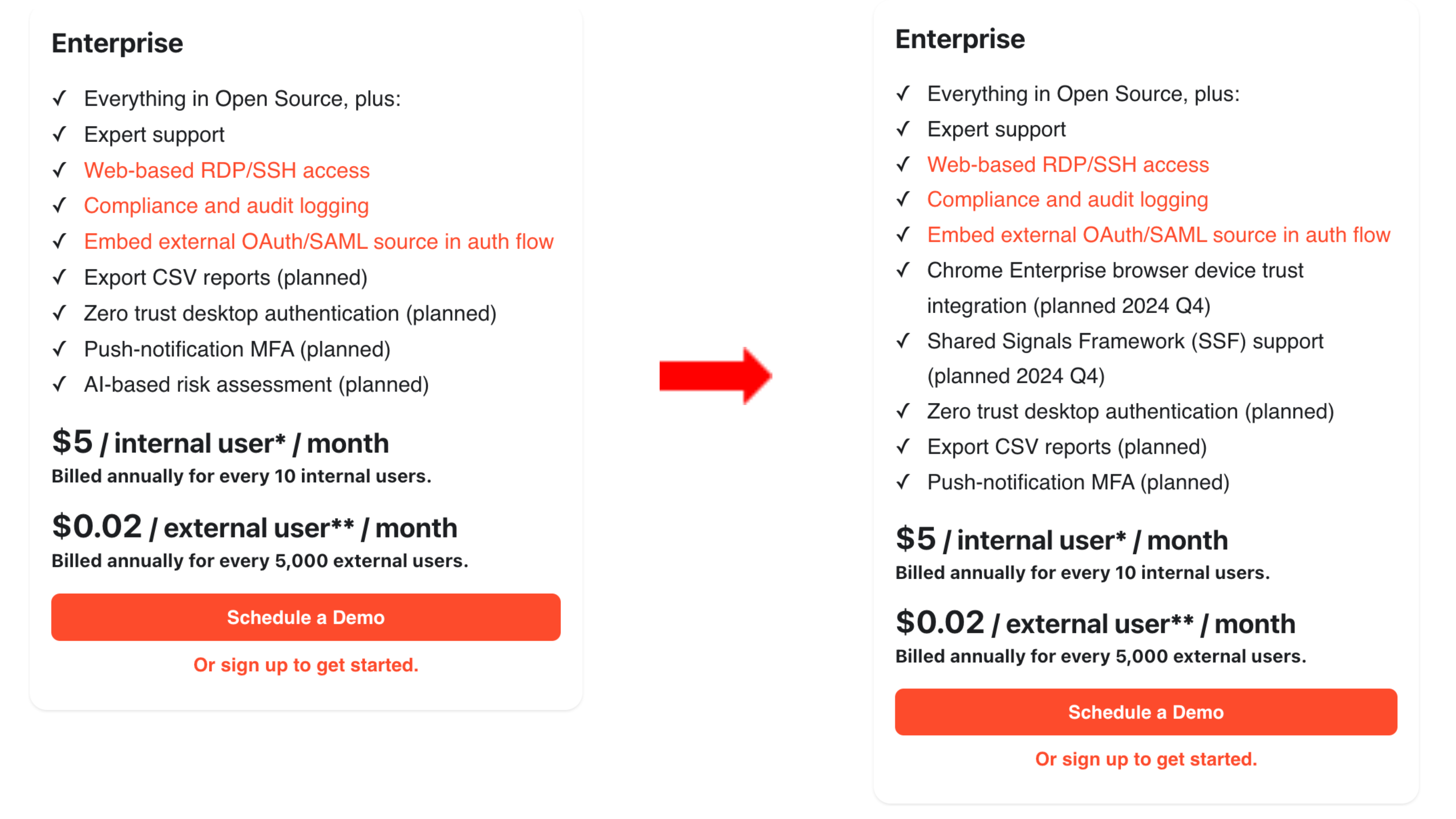authentik is an open source Identity Provider that unifies your identity needs into a single platform, replacing Okta and Auth0, Ping, and Entra ID. Authentik Security is a public benefit company building on top of the open source project.
As a Public Benefit Company, authentik is dedicated to open source software development and to our community, and to continuously developing, providing, and maintaining secure, stable authentication solutions.
We are pleased to share our first Public Benefit Company (PBC) report with you, our community, our users, our contributors, and everyone who invests their time and effort into open source software for the good of us all.
Read on for details about our chartered commitments, the work we do to support these commitments, and how the results of the report show that we are on the right path.
Public Benefit Companies are a relatively new form of business entity, and are not limited to software companies. Two of the best known PBCs are the clothing brand Patagonia and the ice cream maker Ben & Jerry's. For any PBC the core focus is, of course, providing a benefit to others beyond themselves, as well as operating with transparency, accountability, and purpose.
PBCs (no matter their field or product) must act in the best interests of the community and consciously understand how their actions will affect others. For authentik specifically, we consider our work in the light of benefiting:
- users and community members who implement and rely on our products
- individuals or companies who contributed to or invested in authentik
- the security and stability of broader systems and environments
- the team members of the company
The benefits to us of being a PBC include attracting like-minded developers with the skills to continuously propel the project forward in the community as well as promoting trust from the community in our ongoing responsibility to the open source project.
In the annual or biennial report, PBCs typically provide a description and explanation of how the benefit company provided a general and/or specific public benefit, as well as which actions and methods they used to deliver and maintain the benefit.
Authentik Security’s stated public benefit purpose is to maintain an open-source platform for the benefit of the public.








